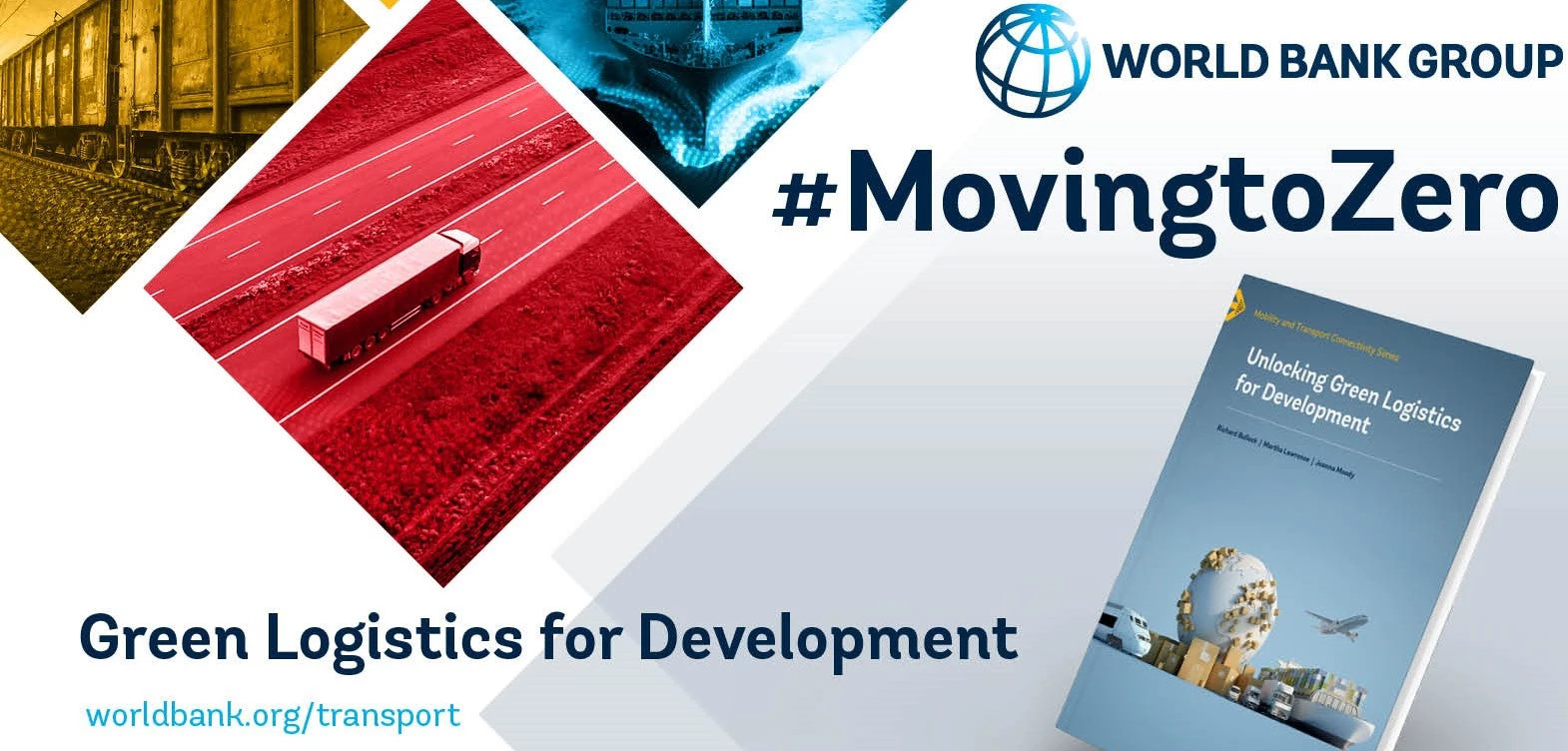 https://blogs.worldbank.org/transport/greener-logistics-can-bring-big-climate-gains
https://blogs.worldbank.org/transport/greener-logistics-can-bring-big-climate-gains
DOWNLOAD: Unlocking Green Logistics for Development
The logistics industry is a cornerstone of the global economy, connecting companies and production centers to consumers around the world. The sector has been growing substantially over the past few decades, and will continue to do so for the foreseeable future. In fact, global freight volumes are expected to increase threefold between now and 2050.
While this continued expansion could be good news for the economy, it also poses a serious threat to global climate goals. In 2019, logistics already accounted for almost 10% of global greenhouse gas emissions. Without serious changes to the logistics and freight transport industries, associated emissions will continue to rise at a rapid pace, with much of the new emissions coming from land transport in developing countries as well as international maritime shipping.
But it doesn’t have to be that way. Countries have several options at their disposal to drastically reduce the climate impact of logistics. One key solution is to improve spatial planning: bringing economic activity and logistics facilities closer together would maximize efficiency, reduce the total distance that goods have to travel, and reduce emissions. Adequate pricing measures can also create a powerful incentive for players across the industry to minimize their climate impact. Other major changes pertain to freight transport, such as shifting to cleaner transport modes, improving vehicle fuel efficiency, and scaling up the use of greener fuels.
Shifting to cleaner modes and cleaner fuels
Of these, measures to support the shift from trucks to lower-carbon modes, such as railways and inland waterways, are among the most impactful. Whether they’re powered by electricity or diesel, trains and barges are much more energy-efficient than trucks. This means they can move large quantities of goods over long distances with a much smaller carbon footprint. Modal shift has other benefits too–it can reduce transport costs, congestion, air pollution, and other externalities associated with road traffic. The benefits of modal shift are immediate, so countries should pursue this shift where it is possible.
However, not all commodities and routes work for rail and water transport. Trucks, ships, and planes will keep playing an important role in the future of logistics—modes that will be much harder to decarbonize. That’s why it is critical for stakeholders across the logistics industry turn their attention to green fuels, which are widely regarded as the most promising way to reduce the climate impact of “hard to abate” transport sectors.
Several alternative fuel options are currently emerging, with varying levels of technical readiness and economic viability: electricity, methane, biofuels, hydrogen, ammonia, and synthetic carbon-based fuels.
Every country needs a Green Logistics Plan
The shift to greener logistics won’t happen overnight. Success will require significant changes to spatial planning and fuel pricing as well as investments in infrastructure, services, and technology.
A new report, Unlocking Green Logistics for Development, offers policymakers a plan for how to approach this transition successfully. The report demonstrates why decarbonization of the logistics sector must become an integral part of economic and transport planning in low- and middle-income countries. It also provides practical recommendations for how to identify the right mix of mitigation measures and policy interventions. A key objective here is to help policymakers develop Green Logistics Plans tailored to each country’s specific context, challenges, and opportunities.
The road to decarbonization of logistics can bring unique opportunities for LMICs. Countries with ample green electricity supplies and good access to global markets may find the fuel transition in logistics creates new economic opportunities for producing and exporting green electricity, hydrogen, or other low-carbon fuels. Other countries, large enough to have a domestic vehicle manufacturing industry, may find market opportunities in manufacturing green fuel vehicles. And all LMICs can contribute to and prepare for fuel shift by:
- Participating in the international dialogue and cooperation on alternative maritime and aviation fuels.
- Preparing for disruptive changes in vehicle technology and fuels in the trucking sector, including putting in place motorization management processes that will be important for any vehicle/fuel transition.
- Scaling up green energy production to ensure that alternative energy sources are available and reliable.
However countries decide to move forward, the most important takeaway is to start the shift now. Turning over vehicle fleets can take decades, so today’s decisions regarding vehicle purchases and logistics systems will have an impact for years to come. There is no time to waste.




Join the Conversation